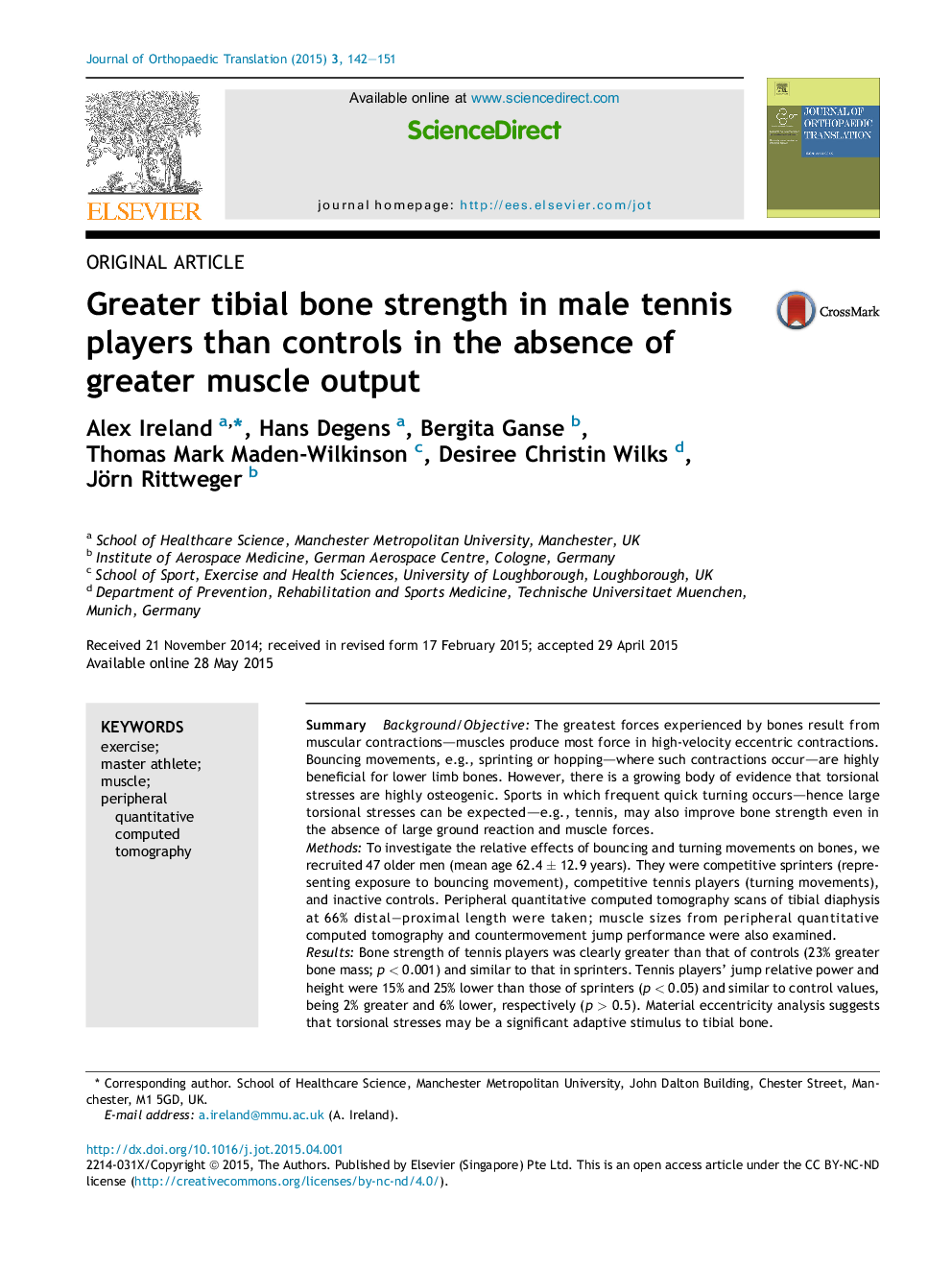| Article ID | Journal | Published Year | Pages | File Type |
|---|---|---|---|---|
| 2740008 | Journal of Orthopaedic Translation | 2015 | 10 Pages |
SummaryBackground/ObjectiveThe greatest forces experienced by bones result from muscular contractions—muscles produce most force in high-velocity eccentric contractions. Bouncing movements, e.g., sprinting or hopping—where such contractions occur—are highly beneficial for lower limb bones. However, there is a growing body of evidence that torsional stresses are highly osteogenic. Sports in which frequent quick turning occurs—hence large torsional stresses can be expected—e.g., tennis, may also improve bone strength even in the absence of large ground reaction and muscle forces.MethodsTo investigate the relative effects of bouncing and turning movements on bones, we recruited 47 older men (mean age 62.4 ± 12.9 years). They were competitive sprinters (representing exposure to bouncing movement), competitive tennis players (turning movements), and inactive controls. Peripheral quantitative computed tomography scans of tibial diaphysis at 66% distal–proximal length were taken; muscle sizes from peripheral quantitative computed tomography and countermovement jump performance were also examined.ResultsBone strength of tennis players was clearly greater than that of controls (23% greater bone mass; p < 0.001) and similar to that in sprinters. Tennis players' jump relative power and height were 15% and 25% lower than those of sprinters (p < 0.05) and similar to control values, being 2% greater and 6% lower, respectively (p > 0.5). Material eccentricity analysis suggests that torsional stresses may be a significant adaptive stimulus to tibial bone.ConclusionResults suggest that sports with quick turning movements are highly osteogenic, even in the absence of greater muscular output. This may be related to the large torsional stresses produced during turning movements.
